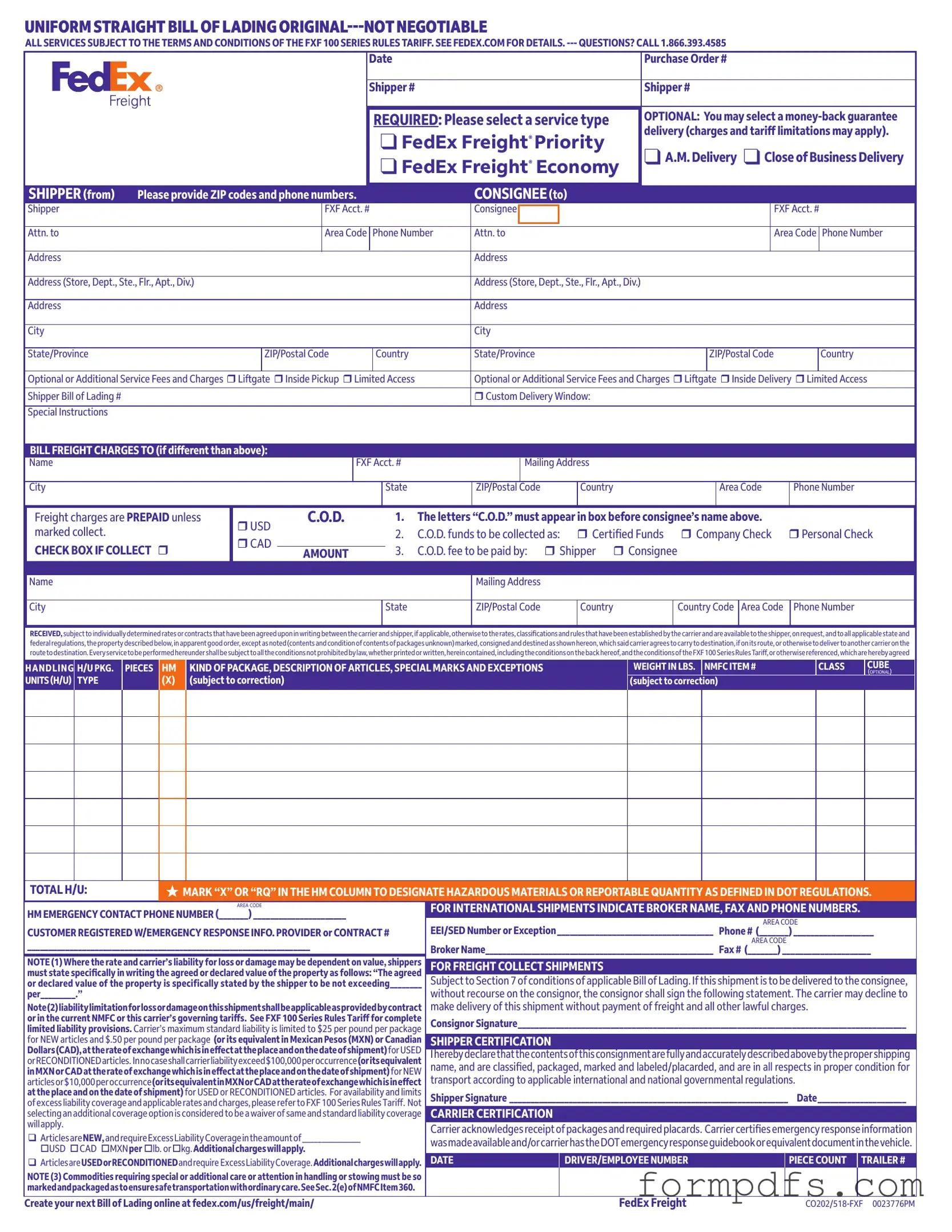What is a FedEx Bill of Lading?
The FedEx Bill of Lading is a legal document that serves as a receipt for freight services. It outlines the details of the shipment, including the sender, recipient, and the type of service selected. This document is essential for both the shipper and the carrier, as it provides proof of the agreement for transportation of goods.
What information do I need to provide when filling out the form?
When completing the FedEx Bill of Lading, you need to provide information such as the shipper's and consignee's names and addresses, contact numbers, service type, and any special instructions. Additionally, details about the freight, including weight, dimensions, and any hazardous materials, must be included. This ensures that the carrier can handle your shipment appropriately.
What are the different service types available?
FedEx offers several service types for freight shipping. These include FedEx Freight Priority for expedited delivery, FedEx Freight Economy for standard shipping, and options for A.M. Delivery or Close of Business Delivery. You can choose the service that best fits your timeline and budget.
What does "C.O.D." mean, and how does it work?
C.O.D. stands for "Cash on Delivery." If you select this option, the recipient must pay for the shipment upon delivery. You can specify the payment method, such as certified funds or a company check. Make sure to indicate this clearly on the Bill of Lading to avoid any confusion during delivery.
How is liability determined for lost or damaged shipments?
The liability for loss or damage is generally limited to $25 per pound for new articles and $0.50 per pound for used or reconditioned items. However, you can declare a higher value for your shipment, which may require additional fees. It’s important to understand these limits and consider whether you need extra coverage based on the value of your shipment.
What should I do if I have special handling requirements?
If your shipment requires special handling, such as liftgate service or inside delivery, you must indicate this on the Bill of Lading. Properly marking these requirements ensures that the carrier is aware of the necessary precautions, which can help prevent damage and ensure timely delivery.
How can I create my Bill of Lading online?
You can easily create your Bill of Lading online by visiting the FedEx Freight website. This convenient option allows you to enter all necessary details and print your document directly. For step-by-step guidance, you can refer to the resources available at fedex.com/us/freight/main/.
